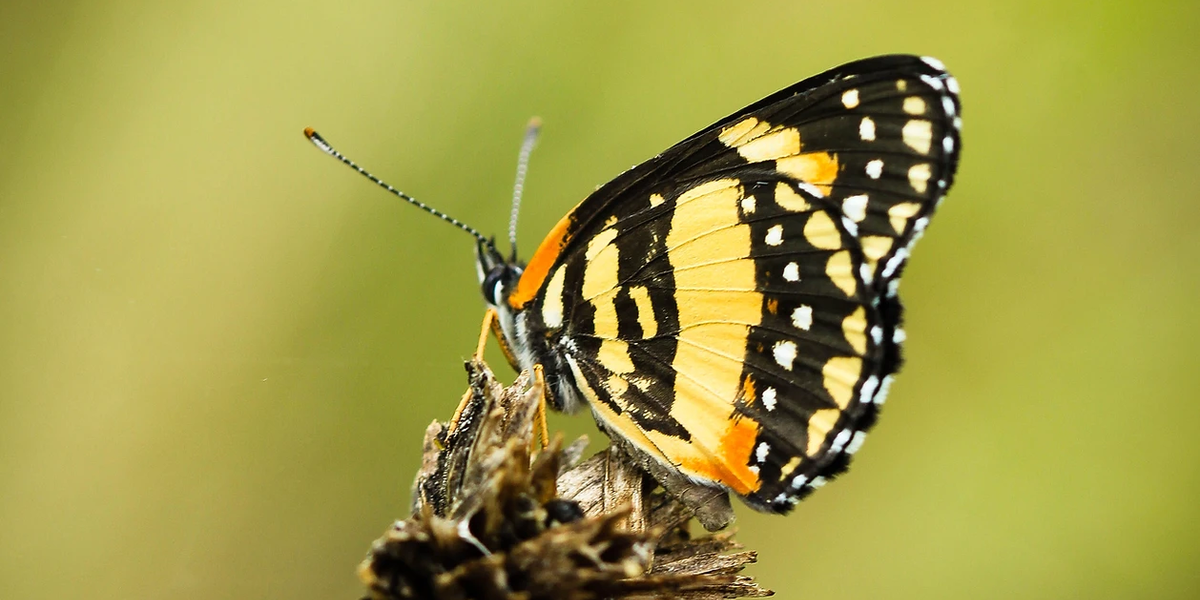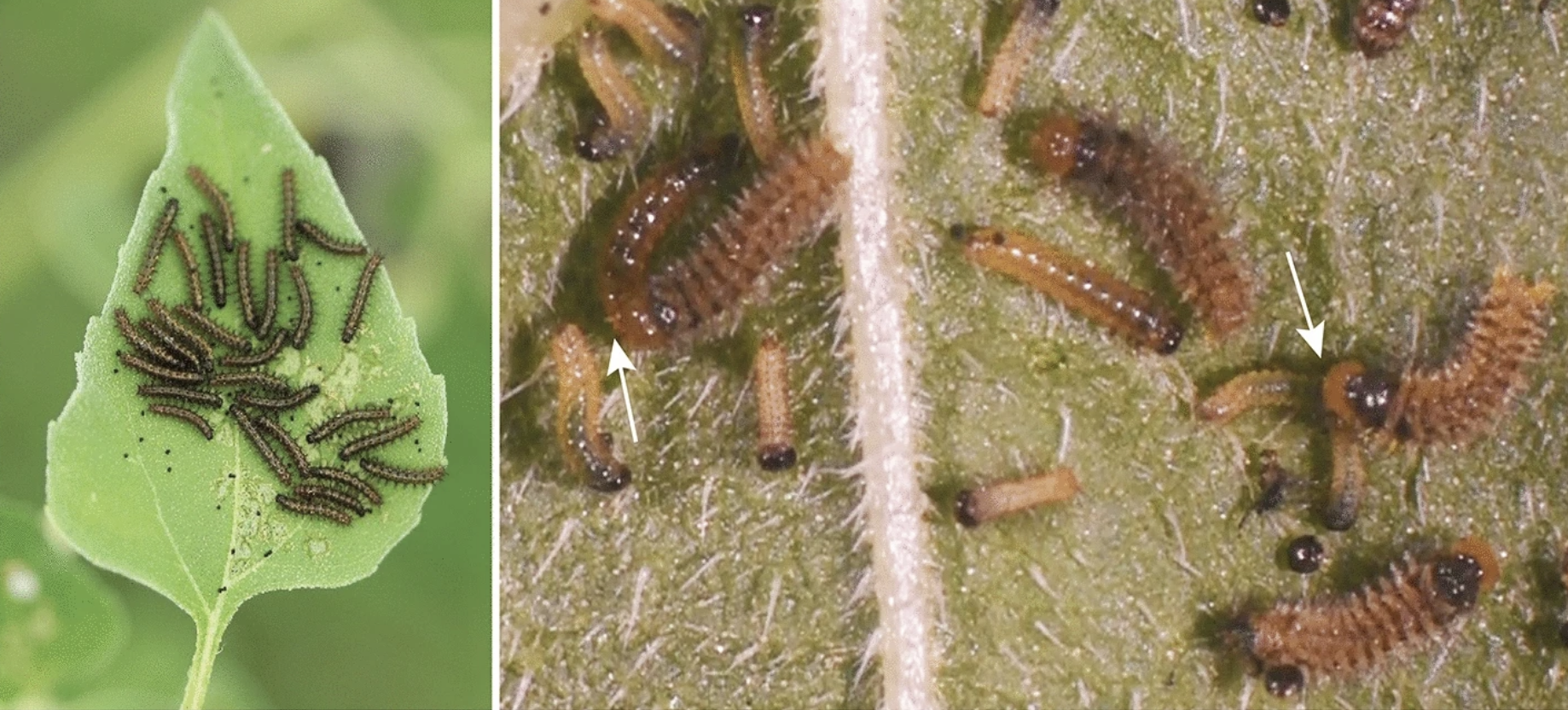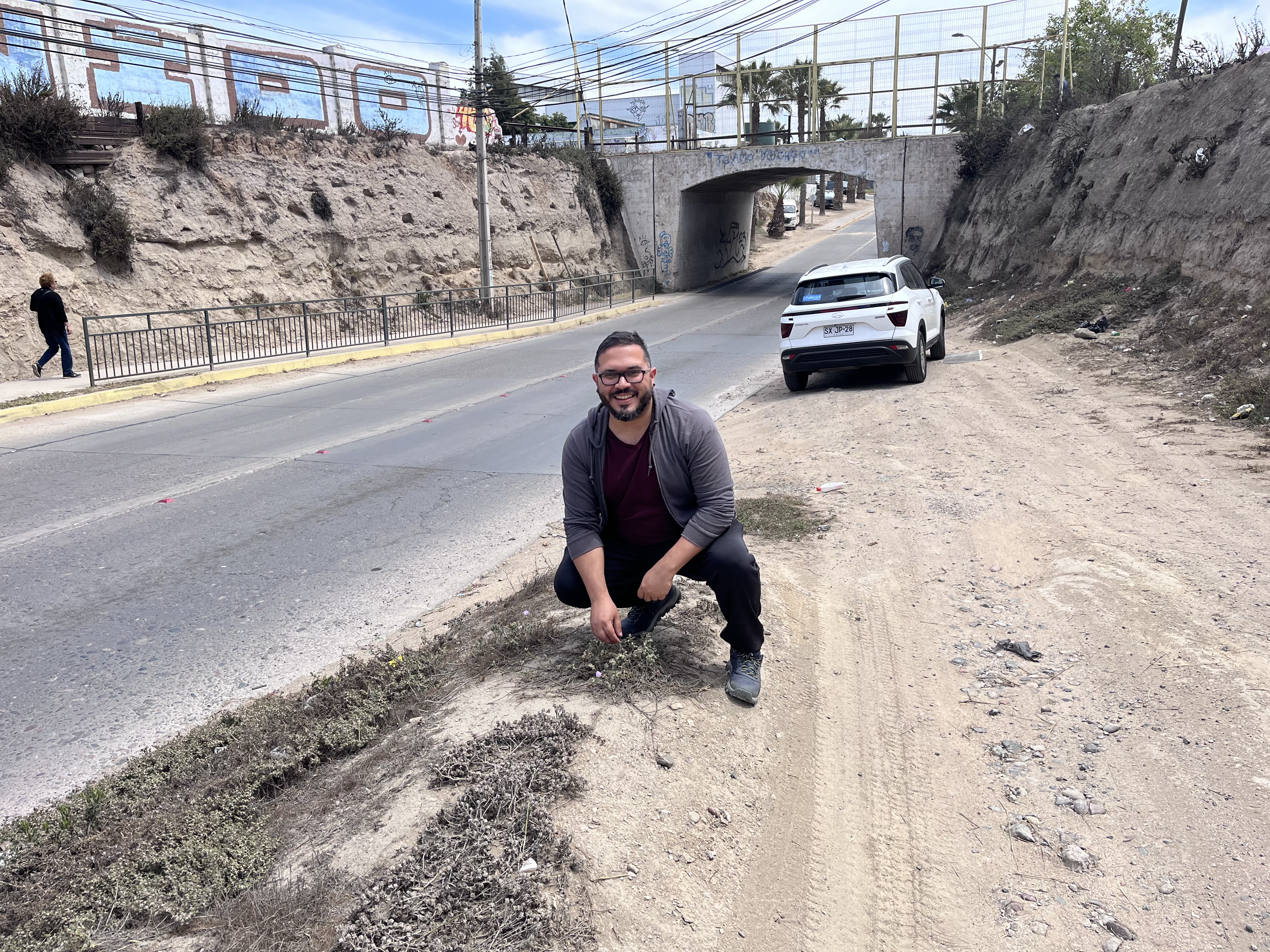
Goats harass hikers for it. Sloths get stuck in latrines looking for it. And a new study reveals that masses of tiny, opaque butterfly larvae eat each other alive in their desperate pursuit of it.
What are they looking for? The same thing we humans are looking for when we grab that bag of chips or pull the jar of pickles out of the fridge: salt.
“Sodium is an essential element for animals” says Luis Santiago-Rosario, a self-proclaimed “salty scientist” who works as a National Science Foundation (NSF) postdoctoral fellow in Emilie Snell-Rood and Sarah Hobbie’s labs and studies how heavy metals and salts in plant tissue varies across North American and South American cities. “It seems obvious, right? Cookies aren’t good without a little bit of salt. You need it to boost flavors.”
Even butterflies need electrolytes. But similar to sports drinks, drinking a little could won't hurt. It could replenish critical resources — especially if you’re running a marathon. Too much of it, however, isn’t good for you.
For bordered patch butterfly larvae, the consequences of too little sodium are rather dire for their own kind as it turns them into cannibals. In a new study for Scientific Reports, Santiago-Rosario and colleagues describe the first documentation of cannibalistic behavior in bordered patch butterfly larvae. When fed leafy greens with low levels of salt, the larvae eat each other alive. But a diet high in salt is just as fatal. Understanding the dynamics of sodium availability could provide useful information for biologists and land managers engaging in conservation efforts.
Luis Santiago-Rosario, private detective
It was an accidental discovery. Santiago-Rosario was rearing a small colony of bordered patch butterfly larvae for a separate “salty” experiment when he noticed the numbers in his colony rapidly dwindling.
“Either they were escaping, which was impossible, because they had mesh [around them] and couldn’t escape. Or they were being eaten by something,” says Santiago-Rosario, whose luckless search for a predator forced him to set up a camera trap to catch the assailant in action.
His camera caught a live view of their gruesome behavior. Hungry caterpillars freshly hatched from the cluster of eggs devoured each other, leaving tiny carcasses in their wake. It surprised him. Eating each other would come at a cost – after all, there’s safety in numbers.

“And then it clicked,” said Santiago-Rosario. “[I thought], what if the reason they are cannibalizing is because there’s not enough salt in the plant tissue they're eating?”
If anyone is primed to ask that question, it’s Santiago-Rosario, who studies the concentration of sodium (as well as heavy metals) in plant tissue. “It's also important to note that sodium for plants is not essential,” says Santiago-Rosario. “Actually, in most cases, it's toxic for plants.” So unlike butterflies, goats and sloths, plants don’t need salt to survive. But the animals that eat them often do.
Beauty and violence
Bordered patch butterfly larvae eat the leaves of sunflowers. Like milkweed and monarchs, the two are a charismatic duo. Santiago-Rosario only thought to study the pairing when he came across bordered patch butterflies while collecting samples from a field of sunflowers in southern Texas. The butterflies – mostly black with bars of brilliant orange and gold – flit among the dizzying yellow blooms of sunflowers stretching tall against the blue Texas sky.
Both are also easy to rear (and grow) in a lab. Santiago-Rosario can adjust sodium levels in sunflower plant tissue by using a hydroponic growing system, a simple way to test some of his scientific theories. But in the wild, a number of things affect sodium availability in plants. Geography, for one, can make a huge difference.
“The closer you are to the ocean, the more salt there is,” says Santiago-Rosario, who did his PhD at Louisiana State University in a lab that had studied bat behavior related to sodium availability. “But in the Andes, there’s very little sodium in the fruits the bat eats, so the bats drink salty water from puddles. The bats on the coast don’t do that.”

Minnesota has a different geography and geology. While we’re not close to an ocean, heavy snow and ice drives local governments and residents to dump salt on roads and sidewalks. Work in the Snell-Rood lab shows that milkweed can soak up a disproportionate amount of road salt compared to other roadside species. That can be fatal to monarchs.
And while the lack of it can lead to some pretty drastic behaviors, Santiago-Rosario thinks it may not always be helpful to prescribe human values to non-human life. I.e., it may be useful to view the cannibalistic behaviors of butterflies with a neutral lens.
“Obviously, we humans like to humanize things. You know, like adding our feelings to how things ‘should’ be or how we perceive things,” says Santiago-Rosario. “Animals don't really work that way. The consequence [of cannibalism] in groups [of animals] is that you can increase disease transmission and decrease group fitness. But the positive aspect is nutrition.” — Adara Taylor
Credit for feature photo goes to Luis Santiago-Rosario.